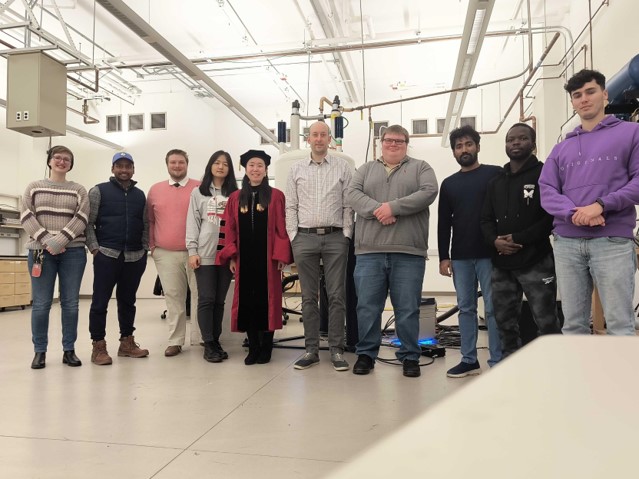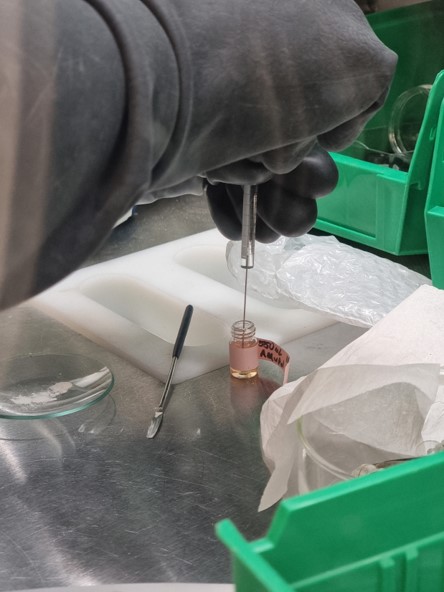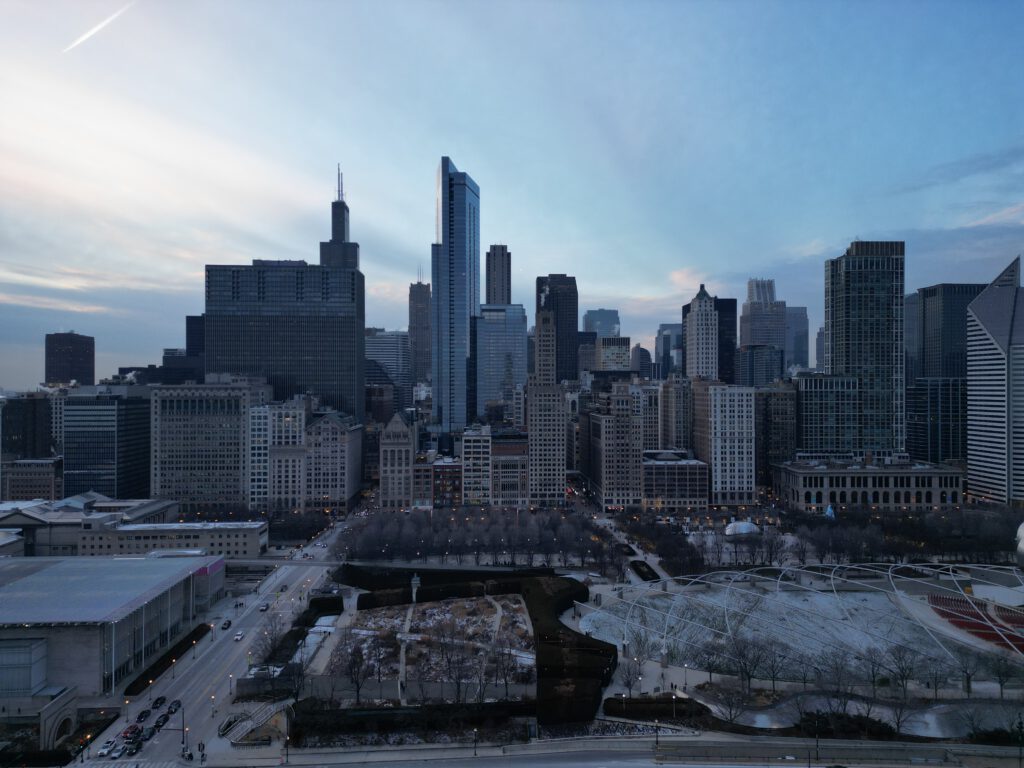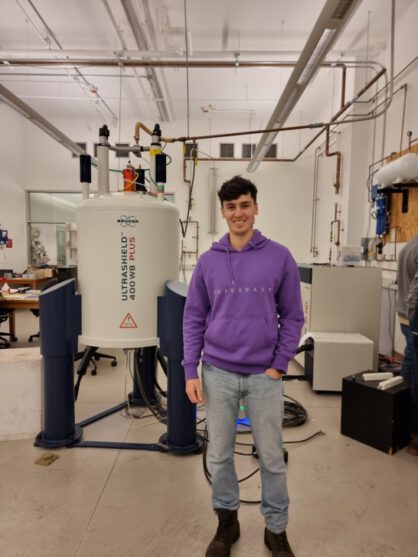Erik Wimmer, CRC 1333 PhD student at the Institute of Technical Chemistry (Project B08), visited the Rossini Group at Iowa State University for two and a half weeks in December 2022 as part of an international research stay, funded by the CRC 1333.
In CRC 1333, all doctoral and postdoctoral researchers have the chance to receive additional funding for a research stay abroad up to three months by application to the CRC board. Thereby, we aim to foster international competencies and early independence of our early career researchers.
The Rossini Group is an experimental physical chemistry research group interested in the structural characterization of inorganic materials, catalysts and pharmaceuticals. The primary tool used to accomplish this is solid-state nuclear magnetic resonance (NMR) spectroscopy.
Erik’s research goal was to analyze and characterize low-loading platinum hydrides on metal oxide supports using advanced solid-state NMR techniques.

In an interview, Erik gave us some insights into his stay:
What was your reason for visiting the Rossini Group?
My supervisor Jun-Prof. Dr. Deven Estes has been in contact with the Rossini group (known from ETH Zurich) for some time, collaborating on palladium and platinum catalysis research. The Rossini Group is working with sophisticated measurement methods in Solid State NMR spectroscopy which are very useful for our research in project B08 of the CRC 1333.
We were interested to use their dynamic nuclear polarization (DNP) solid-state NMR spectrometer. The DNP spectrometer can provide 1 to 2 orders of magnitudes in NMR sensitivity. I was also able to use special fast magic angle spinning probes that use very small rotors and spin the sample up to 50 kHz. Using DNP or fast MAS techniques were able to improve the sensitivity of NMR spectroscopy and for example detect low loadings of catalysts on solid supports. I did all of this work with Ben Atterberry, a PhD student in Rossini’s group. Ben is an expert in all of these techniques and he was able to train me on the use of the spectrometers and also showed me how to analyze 195Pt NMR data.
Another important aim was, to introduce those advanced NMR techniques to Stuttgart, particularly in anticipation of the upcoming new NMR instrument that has been ordered within the CRC 1333. It was, therefore, a good opportunity to use the device for experiments during my two weeks in Iowa.
Finally, establishing a connection with a research group in another country and fostering our collaboration was a great opportunity.

What was special about the work of the Rossini Group?
The group works on the development of methods in solid state NMR spectroscopy and not only on their application. In our group in Stuttgart, we do more experiments in the laboratory, while the Rossini Group works more on analysis and thus more on the spectrometer.
Also, it was interesting to see that the group meetings were held differently: Every week one member of the group had to give a talk on his research and another one on literature. In addition, the group leader gave a talk every other week.

How did you like Iowa? What were some highlights for you?
Professional highlights: I learned a lot about nuclear magnetic resonance, measurements in detail, and experimental work in general. It was great to get insights into the work at other institutes. Although some things are done differently, there are surprisingly many parallels.
Personally, I enjoyed the interaction with the Rossini Group team members, I was included in all activities as if I were a normal employee, from regular work activities to private outings. I had some time to explore Chicago and Des Moines and attended a basketball game. And: I had to speak English all the time, which I enjoyed very much.

Do you have any recommendations for someone looking to do a research stay?
Yes: Plan early enough. My trip was planned on very short notice and the preparations were quite stressful. A longer lead time is definitely more ideal and less stressful. It was a really great experience and I would definitely do it again!
Thank you for all the insights, Erik!
